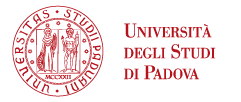Ten researchers from the Department of Geosciences among “The world’s 2% top scientists”

Stanford University has recently published an update of the list of the top 2% most-cited scientists in the world, in different disciplines.
Based on about 8 million authors active in one or more fields of scientific research, the top scientists list comprises also ten researchers from the Department of Geosciences of the Universitty of Padova, working in various fields such as geomorphology, geochemistry and geophysics.
According to the list (available at this link), the ten researchers are: Gilberto Artioli, Filippo Catani, Andrea D’Alpaos, Francesca Da Porto, Manuele Faccenda, Massimiliano Ghinassi, Lara Maritan, Fabrizio Nestola, Paolo Nimis and Nicola Surian. In particular, the researchers fall within the ranking referring to the year 2021, which takes into account the data of the citations received from all their papers in this specific year. Among them, Gilberto Artioli, Filippo Catani and Nicola Surian also appear in the ranking relating to the entire career, which is based on the citations received during all the career.
The Department of Geosciences of the University of Padova has further improved its performance compared to last year, confirming the high quality of the research that is carried out.
The work, led by professor John Ioannidis of the Stanford University in collaboration with Elsevier and the Scopus database, takes into account 22 scientific fields and 176 sub-fields and it shows data referred to career-long and, separately, single recent year impact.
More specifically, the work focuses on the so-called citation metrics, that is, the set of information related to the number of citations obtained from a paper. The data come from Scopus, the world's largest citation abstract database, and include six metrics, ranging from the total number of citations to that referring only to papers as first or single authors, up to the h-index. In addition, particular attention is paid to self-citations, which are appropriately recognized and counted separately, in order to highlight their impact on the metrics themselves.
Originally published in 2019, the list was updated at the end of 2020 by integrating the data available up to the end of the previous year. This third edition is updated to end of 2021. To explain the development, validation and use of these metrics and databases three associated papers were published in PLoS Biology.





